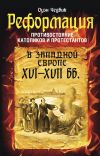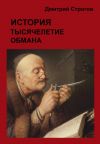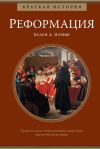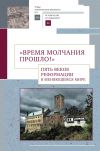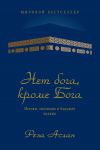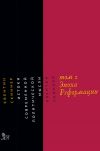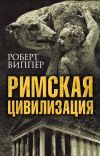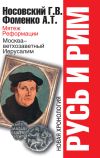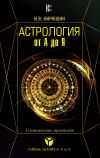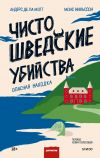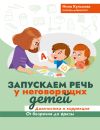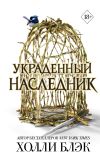Текст книги "Реформация. Полная история протестантизма"

Автор книги: Диармайд Маккалох
Жанр: Религиоведение, Религия
Возрастные ограничения: +18
сообщить о неприемлемом содержимом
Текущая страница: 71 (всего у книги 76 страниц) [доступный отрывок для чтения: 25 страниц]
61. J. Jungić, ‘Prophecies of the Angelic Pastor in Sebastiano del Piombo’s portrait of Cardinal Bandinello Sauli and three companions’, in M. Reeves (ed.), Prophetic Rome in the High Renaissance period (Oxford, 1992), с. 345–370.
62. P. S. Allen, H. M. Allen and H. W. Garrod (eds), Opus Epistolarum Des. Erasmi Roterodami, (12 vols, Oxford 1906–1958), iii, no. 879, см. также ссылки: ibid; iii, с. 417; см. также комментарий: Geoffrey Nuttall, JEH 35 (1984), 311, прим. 1.
63. Об отношениях Эразма и Рогера в последнее время говорят много непонятного и приводящего в замешательство; разумный комментарий: J. Huizinga, Erasmus of Rotterdam (London, 1952), с. 11–12; также: Geoffrey Nuttall, JEH 16 (1975), 403.
64. L.-E. Halkin, Erasmus: A Critical Biography (Oxford, 1993), с. 229. Холкин указывает, что близкий друг Эразма, епископ Джон Фишер, в своих проповедях по-прежнему связывал Псалтирь с Девой Марией.
65. Opera Omnia Desiderii Erasmi Roterodami (Amsterdam, 1969–), vi, 5, с. 490–492.
66. Halkin, Erasmus, с. 225: для сравнения: Opera Erasmi, i, с. 146–147. О проблемах протестантов с Девой Марией: см. ниже, гл. 15, с. 681–682.
67. О прецеденте в сочинениях Агриколы: A. Levi, JEH 34 (1983), 134.
68. CWE, XXXLX–XL: Colloquies, ed. C. R. Thompson (1997), vol. ii, с. 630–633, 636; An admonition showing the advantages which Christendom might derive from an Inventory of Relics, напечатано в издании: Calvin’s Theological Treatises, ed. H. Beveridge (3 vols, Edinburgh, 1844–1851), i, с. 287–341, особ. с. 316–318.
69. CWE: Colloquies, vol. i, с. 355; Opera Erasmi, i, с. 155–156, 172. M. Aston, England’s Iconoclasts: 1. Laws against Images (Oxford, 1988), с. 320–325, особ. прим. 96.
70. MacCulloch, Cranmer, с. 98–99.
71. Allen et al (eds), Opus Erasmi Epistolarum, iii no. 966, с. 585, ll. 16–18.
72. Allen et al (eds), Opus Erasmi Epistolarum, iii no. 858, 1. 561, с. 376. Сравните подобный, но расширенный пассаж в письме к Серватию Рогеру в 1514 году: ibid., i, no. 296, ll. 70–88, 567–568.
73. Достойное обсуждение: J. Estes, ‘Officium principis christiani: Erasmus and the origins of the Protestant State Church’, ARG 83 (1992), 49–72.
74. Allen et al (eds), Opus Erasmi Epistolarum, iii, no. 904, с. 446, ll. 23–25; no. 966, с. 585–586.
3. Новое небо, новая земля. 1517–1524
1. Цит. по: C. Trinkaus, ‘Free will in Renaissance and Reformation’, JHI 10 (1949), перепечатано в издании: P. O. Kristeller and P. P. Wiener (eds), Renaissance Essays (Rochester, NY, 1962), с. 187–198 [193].
2. H. Davies, The Vigilant God: Providence in the thought of Augustine, Aquinas, Calvin and Barth (New York, 1992), с. 115.
3. B. B. Warfield, Calvin and Augustine (Philadelphia, 1956), с. 332.
4. H. Jedin, ‘Contarini und Camaldoli’, Archivio Italiano per la Storia della Pietà 2 (1959), 51–118.
5. J. B. Gleason, John Colet (Berkeley, CA, 1989), с. 70; W. J. Hankey, ‘Aügustinian Immediacy and Dionysian Mediation in John Colet, Edmund Spenser, Richard Hooker and the Cardinal de Bérulle’, in D. de Courcelles (ed.), Augustinus in der Neuzeit, Colloque de la Herzog August Bibliothek de Wolfenbüttel, 14–17 octobre, 1996 (Turnhout, 1998), с. 125–160 [136–141].
6. A. Null, Thomas Cranmer’s Doctrine of Repentance (Oxford, 2001), с. 76–81.
7. B. Bradshaw, ‘Interpreting Erasmus’, JEH 33 (1982), 596–610 [597–601].
8. CWE, lxvi: Spiritualia: Enchiridion; De Contemptu Mundi; De Vidua Christiana, ed. J. W. O’Malley (1988), с. 3, 34, 51, 69, 108, 127.
9. A. Godin, Erasme lecteur d’Origène (Geneva, 1982).
10. J. I. Packer and O. R. Johnston (eds), Martin Luther: the Bondage of the Will (London, 1957), с. 300; WA, xviii, с. 774–775. G. B. Graybill, ‘The evolution of Philipp Melanchthon’s thought on free will’, тезисы диссертации на соискание степени доктора философии, Оксфордский университет, 2002, с. 159.
11. Rummel, Humanism, с. 19.
12. R. Marius, Martin Luther: the Christian between God and Death (Cambridge, MA and London, 1999), с. 72–73.
13. G. L. Bruns, Hermeneutics ancient and modern (New Haven, 1992), с. 139–140, цит. по: J. Pelikan with V. R. Hotchkiss and D. Price, The Reformation of the Bible: The Bible of the Reformation (New Haven, 1996), с. 28–29.
14. Marius, Luther, гл. 6, 7, особенно с. 108. Текст приведен в издании: W. Pauck (ed.), Luther: lectures on Romans (Philadelphia and London: Library of Christian Classics 15, 1956).
15. Сокращенная версия в издании: G. Rupp and B. Drewery (eds), Martin Luther (London, 1970), с. 5–7.
16. J. Wilkinson, The Medical History of the Reformers (Edinburgh, 1001), с. 25–26.
17. M. Brecht, Martin Luther: Shaping and Defining the Reformation 1521–1532 (Minneapolis, 1990), с. 378–379; для сравнения: с. 395–396.
18. Marius, Luther, Ch. 12.
19. C. M. Koslofsky, The Reformation of the dead: Death and Ritual in Early Modern Germany 1450–1700 (Basingstoke, 2000), с. 34–39.
20. Pettegree (ed.), Reformation World, с. 78.
21. W. D. J. Cargill Thompson, ‘Seeing the Reformation in medieval perspective’, JEH 25 (1974), 297–307 [299].
22. См. другие примеры: Naphy (ed.), Documents, с. 11–12.
23. Rupp and Drewery (eds), Luther, op. cit., с. 15; см. ключевые документы 1517 года, изложенные там же, с. 17–25.
24. Eisenstein, Printing Revolution, с. 145.
25. Rupp and Drewery (eds), Luther, op. cit., с. 27–29.
26. B. A. Felmberg, Die Ablasstheologie Kardijnal Cajetans (1469–1534) (Leiden, 1998).
27. Naphy (ed.), Documents, с. 18.
28. Marius, Luther, с. 188.
29. Rupp and Drewery (eds), Luther, op. cit., с. 43. ‘Рожденные в законном супружестве’ – передача слова ‘ehelich’, из которого при переводе на английский часто устранялись все одиозные черты, отчего оно и приобрело свое намного менее вероятное значение, связанное с браком: для сравнения: Address to the Nobility (Luther’s Works, vol. xliv), с. 128 и прим.
30. The Babylonian Captivity of the Church (Luther’s Works, vol. xxxvi), с. 33–34.
31. Ibid., с. 57, 116, 117.
32. The Freedom of a Christian (Luther’s Works, vol. xxxi), с. 344.
33. E. Wolgast, Die Wittenberger Luther-Ausgabe: zur überlieferungsgeschichte der Werke Luthers im 16. Jahrhundert (Nieuwkoop, 1971), col. 122. О речи: Rupp and Drewery (eds), Luther, op. cit., с. 58–60.
34. О перемене смыслов, см.: C. Hill, ‘The word “revolution” in seventeenth-century England’, in R. Ollard and P. Tudor-Craig (eds), For Veronica Wedgwood: These Studies in Seventeenth-Century History (London, 1986), с. 134–151.
35. Cunningham and Grell, Four Horsemen, с. 23–24.
36. S. L. Greenslade (ed.), The Cambridge History of the Bible: the West from the Reformation to the Present Day (Cambridge, 1963), с. 7, 20–21, 25, 100; Rupp and Drewery (eds), Luther, op. cit., с. 87–91.
37. A. Duke, ‘The face of popular religious dissent in the Low Countries, 1520–1530’, JEH 26 (1975), 41–67 [42].
38. C. D’Alton, ‘The Suppression of heresy in early Henrician England’, неопубликованные тезисы диссертации на соискание степени доктора философии, Мельбурн, 1999, с. 106, 122; Pettegree (ed.), Early Reformation, с. 221.
39. Pettegree (ed.), Early Reformation, с. 28–30.
40. Ibid., с. 96.
41. Williams, Radical Reformation, с. 106–117.
42. Pettegree (ed.), Early Reformation, с. 32–33.
43. E. Cameron, The European Reformation (Oxford, 1991), с. 182.
44. Pettegree (ed.), Early Reformation, с. 75; G. Ehrstine, ‘Of peasants, women and bears: political agency and the demise of carnival transgression in Bernese Reformation drama’, SCJ 31 (2000), 675–698 [678–679].
45. Naphy, Documents, с. 38.
46. P. L. Avis, ‘Moses and the Magistrate: a study in the rise of Protestant legalism’, JEH 26 (1975), 149–172 [153].
47. U. Gäbler, Huldrych Zwingli: his Life and Work (Edinburgh, 1986), с. 52–54.
48. Naphy, Documents, с. 30.
49. WA, vi, с. 447, 1. 18, и прим.
50. B. Gordon, ‘Malevolent ghosts and ministering angels: apparitions and pastoral care in the Swiss Reformation’, in Gordon and Marshall (eds), Place of the Dead, с. 87–109 [88].
51. E. Cameron, ‘Philipp Melanchthon: image and substance’, JEH 48 (1997), 705–712 [721–722].
52. J. C. Smith, ‘Katharina von Bora through five centuries: a historiography’, SCJ 30 (1999), 745–773. Для сравнения: Wilkinson, Medical History of the Reformers, op. cit., с. 15.
53. M. Aston, England’s Iconoclasts: 1. Laws against Images (Oxford, 1988), с. 39–43; Michalski, Reformation and Visual Arts, с. 19, 29, 176.
54. Aston, England’s Iconoclasts, op. cit., с. 373, 379–381.
55. Ibid., с. 378–379.
56. K. H. Marcus, ‘Hymnody and hymnals in Basel, 1526–1606’, SCJ 32 (2001), 723–742 [731–732].
57. Полезные сведения в источнике: A. Friesen, Erasmus, Anabaptists, and the Great Commission (Grand Rapids, 1998), хотя Фризен слишком решительно называет этот мотив единственным источником идей анабаптистов.
58. Rupp and Drewery (eds), Luther, op. cit., с. 78.
59. Packer and Johnston (eds), Luther: the Bondage of the Will, op. cit., с. 318; WA xviii, с. 786.
60. Hyperaspistes, in CWE, LXVI: Controversies, ed. C. Trinkaus (1999), с. 117.
61. Pettegree (ed.), Early Reformation, с. 10, 16; Matheson (ed.), Argula von Grumbach: a woman’s voice in the Reformation (Edinburgh, 1995).
62. O. Chadwick, The Reformation (London, 1964), с. 1.
63. О лести, см. содержательное обсуждение: Cameron, European Reformation, op. cit., с. 311–313. О Гамбурге: O. Scheib, Die Reformationsdiskussionen in der Hansestadt Hamburg, 1522–1528: zur Struktur und Problematik der Religionsgespräche (Münster Westfalen, 1976).
64. Gordon and Marshall (eds), Place of the Dead, с. 8.
65. О Хилтене: Cunningham and Grell. Four Horsemen, с. 21.
66. Michalski, Reformation and Visual Arts, с. 83, 90–91.
67. Ibid., с. 86, 92–93, 95, 132.
68. T. Johnson, ‘Holy fabrications: the catacomb saints and the Counter-Reformation in Bavaria’, JEH 47 (1996), 274–297 [276].
69. WA, xi, с. 245–281; H. Höpfl (ed.), Luther and Calvin on Secular Authority (Cambridge, 1991).
70. J. Estes, ‘Erasmus, Melanchthon and the office of Christian magistrate’, Erasmus of Rotterdam Society Yearbook 18 (1998), 21–39 [30]; J. Estes, ‘The role of godly magistrates in the Church: Melanchthon as Luther’s interpreter and collaborator’, CH 67 (1998), 463–483 [471].
71. H. Bornkamm, Luther in mid-career 1521–1530 (London, 1983), с. 122–127.
4. Заигрывания с властью земной. 1524–1540
1. Cunningham and Grell, Four Horsemen, с. 77, 320.
2. T. F. Sea, ‘The Swabian League and peasant disobedience before the German Peasants’ War of 1525’, SCJ 30 (1999), 89–112.
3. G. P. Sreenivasan, ‘The social origins of the Peasants’ War of 1525 in Upper Swabia’, PP 171 (May 2001), 30–65.
4. Pettegree (ed.), Early Reformation, с. 59; Kloczowski, Polish Christianity, с. 98.
5. Matheson, Imaginative World, с. 67.
6. G. Rupp and B. Drewery (eds), Martin Luther (London, 1970), с. 122.
7. T. Scott and B. Scribner (eds), The German Peasants’ War: a history in documents (Atlantic Highlands, 1991), с. 322–324.
8. Rupp and Drewery (eds), Luther, с. 121.
9. T. Scott, ‘The “Volksreformation” of Thomas Müntzer in Allstedt and Mühlhausen’, JEH 34 (1983), 194–213; E. G. Rupp, Patterns of Reformation (London, 1969), часть III.
10. A Stella, Il ‘Bauernführer’ Michael Gaismair e l’utopia di un repubblicanesimo popolare (Bologna, 1999).
11. Davies, God’s Playground, с. 143; H. Bornkamm, Luther in mid-career 1521–1530 (London, 1983), гл. 12.
12. Pettegree (ed.), Early Reformation, с. 98–99.
13. Ibid., с. 45–47.
14. Bornkamm, Luther, с. 635–636.
15. I. Saulle Hippenmeyer, Nachbarschaft, Pfarrei und Gemeinde in Graubünden 1400–1600 (2 vols, Chur, 1997), особ. i, с. 171–182.
16. M. U. Edwards, ‘The Luther Quincentennial’, JEH 35 (1984), 597–613 [601].
17. Полезные фрагменты текста «Малого катехизиса», в том числе и вышеупомянутое восклицание из вступления, приведены в источнике: B. J. Kidd (ed.), Documents illustrative of the Continental Reformation (Oxford, 1911), no. 97.
18. Лютер не использовал этот термин до 1539 года: J. Estes, ‘Luther’s first appeal to secular authorities for help with church reform, 1520’, in R. J. Bast and A. C. Gow (eds), Continuity and Change: the harvest of late medieval and Reformation history (Leiden, 2000), с. 48–76, 67 прим.
19. J. Estes, ‘The role of godly magistrates in the Church: Melanchthon as Luther’s interpreter and collaborator’, CH 67 (1998), 463–483 [472].
20. Naphy (ed.), Documents, с. 92.
21. Williams, Radical Reformation, с. 60, 136, 205, 218–227.
22. Ibid., с. 229.
23. C.-P. Calsen, ‘Executions of Anabaptists 1527–1618: a research report’, MQR 47 (1973), 115–152 [118–119]. Pötner, Styria, с. 16.
24. A. Jelsma, ‘A “Messiah for women”: religious commotion in the northeast of Switzerland, 1525–1526’, in W. J. Sheils and D. Wood (eds), Women in the Church (SCH 27, 1990), с. 295–306.
25. Jelsma, ‘“Messiah for women” ‘, с. 296. Текст исповеди см. в издании: J. C. Wenger, ‘The Schleitheim Confession of Faith’, MQR 19 (1945), 247–251.
26. L. Harder, The Sources of Swiss Anabaptism: the Grebel letters and Related Documents (Scottdale, PA, 1985), [no. 63], с. 290.
27. Полезные фрагменты дискуссии: Naphy (ed.), Documents, с. 94–100.
28. G. R. Potter (ed.), Huldrych Zwingli (London, 1978), с. 100. Именно эта «дань уважения» заставила Лютера в 1527 году написать памфлет, где он назвал Цвингли фанатиком.
29. J. Edwards, ‘Kindred spirit? Alfonso de Valdés and Philip Melanchthon at the Diet of Augsburg’, неопубликованное исследование.
30. T. A. Brady Jr., Ruling Class, Regime and Reformation in Strasburg 1520–1555 (Leiden, 1978), с. 238.
31. G. W. Locher, Zwingli’s Thought: New Perspectives (Leiden, 1981), с. 270–274.
32. G. R. Potter, ‘Zwinglian synods in east Switzerland, 1529–1531’, JEH 26 (1975), 261–266.
33. G. R. Potter, Zwingli (Cambridge, 1976), с. 414.
34. Пространная дискуссия об отношениях духовенства: H. U. Bächtold, Heinrich Bullinger vor dem Rat (Bern, 1982).
35. B. A. Gerrish, Grace and Gratitude: the eucharistic theology of John Calvin (Minneapolis and Edinburgh, 1993), особ. с. 166–167; сравните также: Gerrish, ‘Sign and reality: the Lord’s Supper in the Reformed Confessions’, in Gerrish, The Old Protestantism and the New (Chicago and Edinburgh, 1982), с. 118–130 [128]; о Цвингли: Gerrish, Continuing the Reformation: Essays on Modern Religious Thought (Chicago 1993), с. 64–75.
36. J. W. Baker, ‘Heinrich Bullinger, the Covenant, and the Reformed Tradition in retrospect’, SCJ 29 (1998), 359–376.
37. D. F. Wright (ed.), Common Places of Martin Bucer (Appleford, 1972), с. 18; T. H. L. Parker, JEH 35 (1984), 668.
38. Rupp, Patterns с. 37–42.
39. D. Mayes, ‘Heretics or nonconformists? State policies toward Anabaptists in 16th century Hesse’, SCJ 32 (2001), 1003–1025 [1007–1008].
40. Williams, Radical Reformation, с. 248–249; E. A. McKee, Katharina Schütz Zell (2 vols, Leiden, 1999), pp. i, 222–224, 418.
41. L. J. Abray, ‘Confession, conscience and honour: the limits of magisterial tolerance in 16th century Strassburg’, in Grell and Scribner (eds), Tolerance in the Reformation, с. 94–107 [104]; Williams, Radical Reformation, с. 286–288, 292.
42. E. Male, Religious Art (London, 1949), с. 167. О средневековых предпосылках доктрины о небесной плоти, см.: Williams, Radical Reformation, с. 325–335.
43. A. Duke, ‘The face of popular religious dissent in the Low Countries, 1520–1530’, JEH 26 (1975), 41–67 [52].
44. Williams, Radical Reformation, с. 245.
45. Ibid., с. 329, 330–332. О Бернарде, см.: Ellington, Mary, с. 128.
46. Williams, Radical Reformation, с. 176–178.
47. Лучшее повествование о скандинавских событиях: O. Grell, in Pettegree (ed.), Early Reformation, гл. 5.
48. Davies, God’s Playground, с. 126, 130–131, 190–191, 440–444.
49. A. Hermann and W. Kahle (eds), Die reformatorischen Kirchen Litauens. Ein historischer Abriss (Erlangen, 1998).
50. Davies, God’s Playground, с. 202–212, 238, 281.
51. Ibid., с. 145.
52. Pettegree (ed.), Reformation World, с. 117.
53. Ibid., с. 218.
54. Cottret, Calvin, с. 49.
55. Образцы текста на плакатах, утраченных до 1943 года, см.: Naphy (ed.), Documents, с. 54.
56. Для сравнения: Calvin, ed. McNeill and Battles, Institutes, с. 15; также: Calvin, ed. McNeill and Battles, Institutes, с. 35 [Institutes I.i.1.]
57. J. W. Balke and W. H. T. Moehn (eds), J. Calvin, Sermons on the Acts of the Apostles (Neukirchen, 1994), с. 160–161.
58. Из-за подобного инцидента великий проповедник XV века Иоганн Гейлер фон Кайзерсберг навсегда поселился в Страсбурге; для сравнения: D. Steinmetz, Reformers in the Wings (2nd edn., Oxford, 2001), с. 9–10.
59. W. G. Naphy, Calvin and the Consolidation of the Genevan Reformation (Manchester, 1994), гл. 1, 4.
60. Cottret, Calvin, с. 134, 136.
61. D. Potter, A History of France, 1460–1560: the emergence of a nation state (Basingstoke, 1995), с. 248.
62. Pettegree (ed.), Reformation World, с. 218; P. J. McGinnis and A. H. Williamson (eds), George Buchanan: the political poetry (Edinburgh, 1995), с. 6–7, 16–18, 313.
63. W. Monter, Judging the French Reformation: heresy trials by 16th century Parlements (Cambridge MA, 1999); важная переоценка прежде некритического отношения к работам Жана Криспена, специалиста в мартирологии, сделавшего акцент на мученичестве десять лет спустя.
64. V. Murphy, ‘The literature and propaganda of Henry’s divorce’, in D. MacCulloch (ed.), The Reign of Henry VIII: Politics, Policy and Piety (Basingstoke, 1995), гл. 6; G. Nicholson, ‘The Act of Appeals and the English Reformation’, in C. Cross, D. Loades and J. J. Scarisbrick (eds), Law and Government under the Tudors (Cambridge, 1988), с. 19–30.
65. О Кранмере в свете последующих событий, см.: MacCulloch, Cranmer.
66. K. Carleton, Bishops and Reform in the English Church, 1520–1559 (Woodbridge, 2001), с. 63–65. Об Анне и книгах: J. P. Carley (ed.), The Libraries of King Henry VIII (London, 2000), pp. lvii – lviii.
67. R. W. Hoyle, The Pilgrimage of Grace and the Politics of the 1530s (Oxford, 2001).
68. H. Robinson (ed.), Original Letters relative to the English Reformation (2 vols, PS, 1846–1847), с. 241–242.
69. MacCulloch, Cranmer, гл. 7–9, также см. ниже, гл. 5, с. 310.
70. H. A. Jefferies, ‘The early Tudor Reformations in the Irish Pale’, JEH 52 (2001), 34–62 [44–47].
71. Об установлении родины Тиндейла, см.: A. J. Brown, William Tyndale on Priests and Preachers with new light on his early career (London, 1996), гл. 1, 2.
72. O. O’Sullivan (ed.), The Bible as Book: the Reformation (London, 2000), с. 47.
73. Достойное изложение последующих событий, впрочем, с антипатией к анабаптистам: N. Cohn, The Pursuit of the Millennium (London, 1957), гл. 13.
74. G. Waite, David Joris and Dutch Anabaptism 1524–1543 (Waterloo, Ont., 1990).
75. Williams, Radical Reformation, с. 114.
76. A. Hamilton, The Family of Love (Cambridge, 1981); C. Marsh, The Family of Love in English Society 1550–1630 (Cambridge, 1993); великолепное исследование Марш легло в основу большей части дальнейшего повествования, хотя некоторые предположения принадлежат мне.
77. Eisenstein, Printing Revolution, с. 82, 175–176; о Плантене см. также: Hamilton, Family of Love, с. 43–48, гл. 4.
78. C. Marsh, The Family of Love in English Society 1550–1630 (Cambridge, 1993), с. 282–283.
79. P. Collinson, ‘Andrew Perne and his times’, in P. Collinson et al., Andrew Perne: Quatercentenary Studies, Cambridge Bibliographical Society 11 (1991), с. 1–34 [1, 24, 34]; об инсинуациях см. также: гл. 8, с. 449.
80. P. L. Avis, ‘Moses and the Magistrate: a study in the rise of Protestant legalism’, JEH 26 (1975), 149–172 [155].
81. Rummel, Humanism, с. 110.
82. J. Bale, A mysterye of iniquitye contayned within the heretycall Genealogye of Ponce Pantolabus (Antwerp, 1545, RSTC 1303), fo. 54v.
83. R. F. Smith, Luther, Ministry and Ordination Rites in the Early Reformation Church (New York, 1996), гл. 3.
5. Отложенное воссоединение: католики и протестанты. 1530–1560
1. Pettegree (ed.), Early Reformation, с. 195. Труды Лютера тоже переводились в Англии при Генрихе VIII без упоминания имени автора: A. Pettegree, ‘Printing and the Reformation: the English exception’, in Marshall and Ryrie (eds), Beginnings of English Protestantism, с. 157–179 [166].
2. F. A. James III, Peter Martyr Vermigli and Predestination: the Augustinian Inheritance of an Italian Reformer (Oxford, 1998), ч. II.
3. P. V. Murphy, ‘A worldly reform: honor and pastoral practice in the career of Cardinal Ercole Gonzaga’, SCJ 31 (2000), 399–417.
4. P. Caraman, Ignatius Loyola (San Francisco, 1990), с. 80.
5. Филип Караман указывает, что копия «Золотой легенды», которой владела семья Лопес, была, по крайней мере, современной – ее издали в 1511 году: Caraman, Loyola, с. 28 прим.
6. O. Hufton, ‘Altruism and reciprocity: the early Jesuits and their female patrons’, Renaissance Studies 15 (2001), 328–353 [333].
7. O’Malley, First Jesuits, с. 34–35; но о влиянии женщин на появление буллы см. ниже: гл. 16, с. 711.
8. O’Malley, First Jesuits, с. 67–68, о театинцах: ibid., с. 307.
9. Ibid., с. 299–300.
10. Ibid., с. 51. Об Игнатии и содействии женщин, см. ниже, гл. 15, с. 711–717.
11. O’Malley, First Jesuits, с. 159–162; также см. ниже: гл. 7, с. 384; гл. 9, с. 476–479.
12. T. M. McCoog, ‘Ignatius Loyola and Reginald Pole: a reconsideration’, JEH 47 (1996), 257–273 [267].
13. O’Malley, First Jesuits, с. 202–205, 211–212, 274. О сборе денег, проводимом иезуитами, см. ниже, гл. 16, с. 711–716.
14. B. J. Spruyt, ‘“En bruit d’estre bonne luteriene”: Mary of Hungary (1505–1558) and religious reform’, EHR 109 (1994), 275–307.
15. J. Estes, ‘Melanchthon’s confrontation with the “Erasmian” via media in politics: the De officio principum of 1539’, in J. Loehr (ed.), Dona Melanchthoniana (Stuttgart, 2001), с. 83–101 [93–95].
16. MacCulloch, Cranmer, с. 65.
17. C. S. Meyer, ‘Melanchthon, theologian of ecumenism’, JEH 17 (1966), 185–207 [195–196].
18. J. K. Cameron, ‘The Cologne Reformation and the Church of Scotland’, JEH 30 (1979), 39–64.
19. L. von Ranke, Sämmtlicbe Werke, 3rd edn. 37, Die Römischen Päpste in den letzten vier Jahrhunderten I, с. 107, цит. по: B. Hall, ‘The colloquies between Catholics and Protestants, 1539–1541’, in G. J. Cuming and D. Baker (eds), Councils and Assemblies (SCH 7, 1971), с. 235–266 [235].
20. D. C. Steinmetz, Reformers in the Wings (2nd edn. Oxford, 2001), с. 25–27, приводит содержательное обсуждение воззрений Гроппера.
21. Hall, ‘Colloquies’, с. 246, 254.
22. G. W. Searle, The Counter-Reformation (London, 1973), с. 78.
23. О религиозной связи Колонны и Микеланджело, см.: B. Collett, A Long and Troubled Pilgrimage: the correspondence of Marguerite D’Angoulême and Vittoria Colonna 1540–1545 (Studies in Reformed Theology and History new ser. 6, 2001), с. 87, 89–92. On Venice and Manelfi, Williams, Radical Reformation, с. 559–565.
24. M. A. L. Overell, ‘Edwardian court humanism and Il Beneficio di Cristo, 1547–1553’, in J. Woolfson (ed.), Reassessing Tudor Humanism (Basingstoke, 2002), с. 151–173. Биограф Поула Томас Майер довольно туманно повествует о прямом вовлечении Поула в подготовку Beneficio: T. F. Mayer, Reginald Pole: prince and prophet (Cambridge, 2000), с. 119–121.
25. T. Freudenberger, Die Fürstbischofe von Würzburg und das Konzil von Trient (Münster, 1989).
26. T. F. Mayer, ‘Marco Mantova: a bronze age conciliarist’, Annuarium Historiae Conciliorum 14 (1984), 392 (прим.), 406.
27. Mayer, Pole, с. 150.
28. A Tallon, La France et le Concile de Trent (1518–1563) (Rome, 1997), с. 167–168, 754–770. Текст постановлений, см.: H. J. Schroeder (ed.), Canons and Decrees of the Council of Trent (London, 1941).
29. D. Fenlon, Heresy and Obedience in Tridentine Italy: Cardinal Pole and the Counter Reformation (Cambridge, 1972), с. 135–136.
30. H. Jedin, ‘The blind «Doctor Scotus»’, JEH 1 (1950), 76–84 [81–83].
31. Подробно об этом ключевом моменте, см.: T. F. Mayer, Cardinal Pole in European context: a via media in the Reformation (Aldershot, 2000), IV–V.
32. W. G. Naphy, ‘Baptisms, church riots and social unrest in Calvin’s Geneva’, SCJ 26 (1995), 87–97.
33. J. Wilkinson, The Medical History of the Reformers (Edinburgh, 2001), с. 62.
34. G. R. Potter and M. Greengrass (eds), John Calvin: Documents of Modern History (London, 1983), с. 101.
35. G. B. Graybill, ‘The evolution of Philipp Melanchthon’s thought on free will’, тезисы диссертации на соискание степени доктора философии, Оксфордский университет, 2002, с. 157–158, 168, 211, 226.
36. Calvin, ed. McNeill and Battles, Institutes, с. 920 [Institutes III.xxi.1].
37. Ibid., с. 929 [Institutes III.xxi.6.].
38. H. Davies, The vigilant God: providence in the thought of Augustine, Aquinas, Calvin and Barth (New York, 1992), с. 37–38. Для сравнения: Calvin, ed. McNeill and Battles, Institutes, с. 955 [Institutes III.xxiii. 7.]; о подобных, но не столь часто цитируемых комментариях Лютера, в которых он соглашается с «оскорбительностью» идеи двойного предопределения, см.: J. I. Packer and O. R. Johnston (eds), Martin Luther: the Bondage of the Will (London, 1957), с. 217; WA, xviii, с. 719.
39. О пропорциях, см. соответственно: Calvin, ed. McNeill and Battles, Institutes, с. 47, 61, 868 [Institutes I.iv.1; I.v.8; III.xx.14]; ibid., с. 979 [III.xxjv.12]; Naphy, Documents, с. 53.
40. E. Cameron, ‘Philipp Melanchthon: image and substance’, JEH 48 (1997), 705–722 [711–712]; для сравнения: Calvin, ed. McNeill and Battles, Institutes, с. 201 [Institutes I.xvi.3]. Об отношениях Кальвина и Меланхтона, см.: Graybill, ‘Melanchthon and free will’, с. 218–221.
41. Apologia of Alphonsus Lyncurius, цит. по: M. A. Overell, ‘The exploitation of Francesco Spiera’, SCJ 26 (1995), 619–637 [631]. Williams, Radical Reformation, с. 623–624 (прим.), приводит серьезные доказательства в пользу того, что автором этого трактата может быть итальянский правовед Маттео Грибальди, который также открыто выступал в защиту Сервета.
42. H. R. Guggisberg, ‘Tolerance and intolerance in sixteenth-century Basel’, in Grell and Scribner (eds), Tolerance in the Reformation, с. 145–163 [150–161].
43. Pettegree (ed.), Early Reformation, с. 225.
44. Cottret, Calvin, с. 199.
45. T. H. L. Parker, Calvin’s Preaching (Edinburgh, 1992), гл. 8.
46. T. H. L. Parker, John Calvin (Berkhamsted, 1975), с. 109.
47. Calvin, ed. McNeill and Battles, Institutes, с. 1367 [Institutes IV.xvii.7]. Комментарии Кальвина в 1550-х годах: Cottret, Calvin, с. 66.
48. Short treatise on the Lord’s Supper (1541), цит. по: P. Rorem, ‘Calvin and Bullinger on the Lord’s Supper’, Lutheran Quarterly 2 (1988), 155–184, 357–389 [156].
49. Cottret, Calvin, с. 345. Образ восходит к Мф 23:37, но тем не менее это превосходная адаптация.
50. Calvin’s Theological Treatises, vol. 1, с. 118–120; это ответный удар Кальвина на «25 статей», изданных 10 марта 1542 года докторами богословия в Парижском университете. О Лютере: W. Tappolet with A. Ebneter, Das Marienlob der Reformatoren: Martin Luther, Johannes Calvin, Huldrych Zwingli, Heinrich Bullinger (Tübingen, 1962), с. 126; о Цюрихе: G. W. Locher, Zwingli’s Thought: New Perspectives (Leiden, 1981), с. 60.
51. Комментарий на Исаию (издан в 1551 году), с. 211, цит. по: Potter and Greengrass (eds), Calvin, с. 36. О вездесущности: Calvin, ed. McNeill and Battles, Institutes, ii, с. 1379–1403 [Institutes IV.xvii. 16–31].
52. Ibid., с. 1277 [Institutes IV.xiv.1].
53. Ключевое рассуждение в данном случае – о версии Наставлений от 1559 года: Institutes, IV xvii, с. 16–34.
54. Полезное рассуждение, со многими цитатами из «Соглашения»: Rorem, ‘Calvin and Bullinger on the Lord’s Supper’, 367–373. Английский текст, см. напр.: H. Beveridge (ed.), Calvin’s Tracts and Treatises (3 vols, Edinburgh, 1849), ii, с. 212–220.
55. O. P. Grell, ‘Exile and tolerance’, in Grell and Scribner (eds), Tolerance in the Reformation, с. 167–172.
56. Об оскорбительном использовании этих прозвищ, см.: Cottret, Calvin, с. 236 (прим.), 239.
57. H. E. Janssen, Gräfin Anna von Ostfriesland: eine hochadelige Frau der späten Reformationszeit (1540/42–1575) (Münster, 1988).
58. О прическе Лаского, см.: H. P. Jürgens, ’Auctoritas Dei und auctoritas principis. A Lasco in Ostfriesland’ in C. Strohm (ed.), Johannes à Lasco: Polnischer Baron, Humanist und europäischer Reformator (Tübingen, 2000), с. 219–244 [223–224]. Большая часть моих комментариев о Ласком – это отражение рассуждений, приведенных в различных очерках в книге Штрома.
59. C. Haigh, English Reformations (Oxford, 1993), с. 161–162; R. Rex, Henry VIII and the English Reformation (Basingstoke, 1993), с. 169–170, уверяют, что Генрих не знал о том, какие религиозные воззрения разделяют наставники его сына, или не тревожился об этом. Лучшее свидетельство того, что он был хорошо осведомлен о последствиях своих назначений – новогодний подарок, преподнесенный королю в те годы от одного из наставников Эдуарда: сдержанное, но откровенно евангелическое вступление к классическому тексту: J. F. McDiarmid, ‘John Cheke’s Preface to De Superstitione’, JEH 48 (1997), 100–120.
60. A Ryrie, ‘The strange death of Lutheran England’, JEH 53 (2002), 64–92.
61. M. Merriman, ‘James Henrisoun and “Great Britain”: British Union and the Scottish Commonweal’, in R. Mason (ed.), Scotland and England 1286–1815 (Edinburgh, 1987), с. 85–112.
62. MacCulloch, Tudor Church Militant, с. 43–48.
63. MacCulloch, Cranmer, с. 539–540. Сравните также то, с какими теплыми словами Кранмер в марте 1525 года обратился к Георгу Майору, знаменитому священнику-филипписту в Виттенберге: J. E. Cox (ed.), Works of Archbishop Cranmer (2 vols., PS, 1844–1846), ii, с. 433.
64. MacCulloch, Tudor Church Militant, с. 173–174, 176; A. Pettegree, ‘Printing and the Reformation: the English exception’, in Marshall and Ryrie (eds), Beginnings of English Protestantism, с. 157–179 [172].
65. A. Müller (ed.), Reformation zwischen Ost und West. Valentin Wagners griechischer Katechismus (Kronstadt 1550) (Cologne, 2000), особ. с. xxiv. Общее представление о богословах, говорящих на венгерском, см: Pettegree (ed.), Early Reformation, с. 64–66.
66. Pettegree (ed.), Early Reformation, с. 66–67.
67. Williams, Radical Reformation, с. 545–559.
68. Цит. по: Murdock, Calvinism on the Frontier, с. 110. См. обсуждение: ibid., с. 15–16, 19–20.
Правообладателям!
Данное произведение размещено по согласованию с ООО "ЛитРес" (20% исходного текста). Если размещение книги нарушает чьи-либо права, то сообщите об этом.Читателям!
Оплатили, но не знаете что делать дальше?